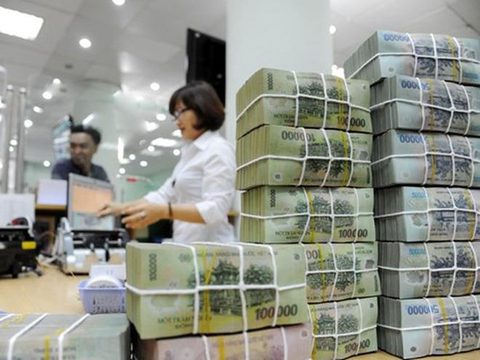Non-performing loans at banks vary
 |
| The ratio of non-performing loans (NPLs) at banks the first quarter of this year was varied. - Photo cafef.vn |
A nonperforming loan (NPL) is the sum of borrowed money upon which the debtor has not made his scheduled payments for at least 30 days.
Statistics from 10 banks -- Vietcombank, Vietinbank, BIDV and MB Bank, as well as VIB, Sacombank, Eximbank and Techcombank, along with Kienlongbank and BacABank, until the end of Q1, showed NPLs worth a total amount of VND50.7 trillion (US$2.2 billion), up six per cent from late 2016.
Of the estimate, loans that could not be paid back between 30 days and 180 days, grew by 13 per cent to 18 per cent, respectively, to VND15.7 trillion and VNĐ7.9 trillion. Bad debts dipped 0.1 per cent but still accounted for the largest proportion of total NPLs (53 per cent) with VND27 trillion.
Sacombank had the highest NPL ratio among listed banks with 4.89 per cent, followed by Eximbank with three per cent. Among the top three banks, BIDV was the only large bank with a high NPL ratio of 2.14 per cent, up from 1.99 per cent in late 2016. Vietcombank, VIB and Kienlongbank recorded a decline in NPL ratio.
According to BVSC, Vietcombank still had the best asset quality in the system, with an NPL ratio of 1.48 per cent as at the end of Q1, down from 1.51 per cent in late 2016.
On the other hand, NPL ratio of Techcombank rose from 1.58 per cent to 1.89 per cent. Total non-performing loans of the bank escalated by nearly 16 per cent to more than VND2.6 trillion, while bad debt amount was VND1.5 trillion, up 10 per cent from late 2016. In addition, the NPL ratio of MBB was 1.35 per cent until 31 March 2017, up from late 2016.
BVSC said the opposite movements of NPL ratios reflected a divergence in the process of writing off bad debts as well as the capacity of managing asset quality among different banks.
This is also one of the major criteria SBV would use while considering the credit growth ceiling for each bank.
SBV should not neglect the security of the system to pursue “overheating” credit growth, especially when bad debt remains a burden for numerous banks, BVSC said.
What the stars mean:
★ Poor ★ ★ Promising ★★★ Good ★★★★ Very good ★★★★★ Exceptional
Latest News
More News
- Decree enhances capital access and transparency (March 11, 2025 | 11:53)
- Sandbox for crypto assets in Vietnam: if not now, when? (March 11, 2025 | 11:34)
- PVcomBank and BPC mark 10 years of partnership (March 11, 2025 | 08:00)
- Banks adjust to balance and cut costs (March 10, 2025 | 14:33)
- Credit rating advance to help next capital market phase (March 10, 2025 | 14:27)
- Building cryptocurrency regulations in Vietnam (March 10, 2025 | 14:12)
- Vietnam to pilot digital asset and cryptocurrency exchange (March 07, 2025 | 14:14)
- Australian lender CBA completes sale of of remaining VIB stake (March 05, 2025 | 17:47)
- Vietnam Access Days 2025 - Vietnam's largest investment conference (March 04, 2025 | 17:10)
- Citi named best bond and equity bank by Asia’s leading finance magazines (March 04, 2025 | 17:08)















 Mobile Version
Mobile Version